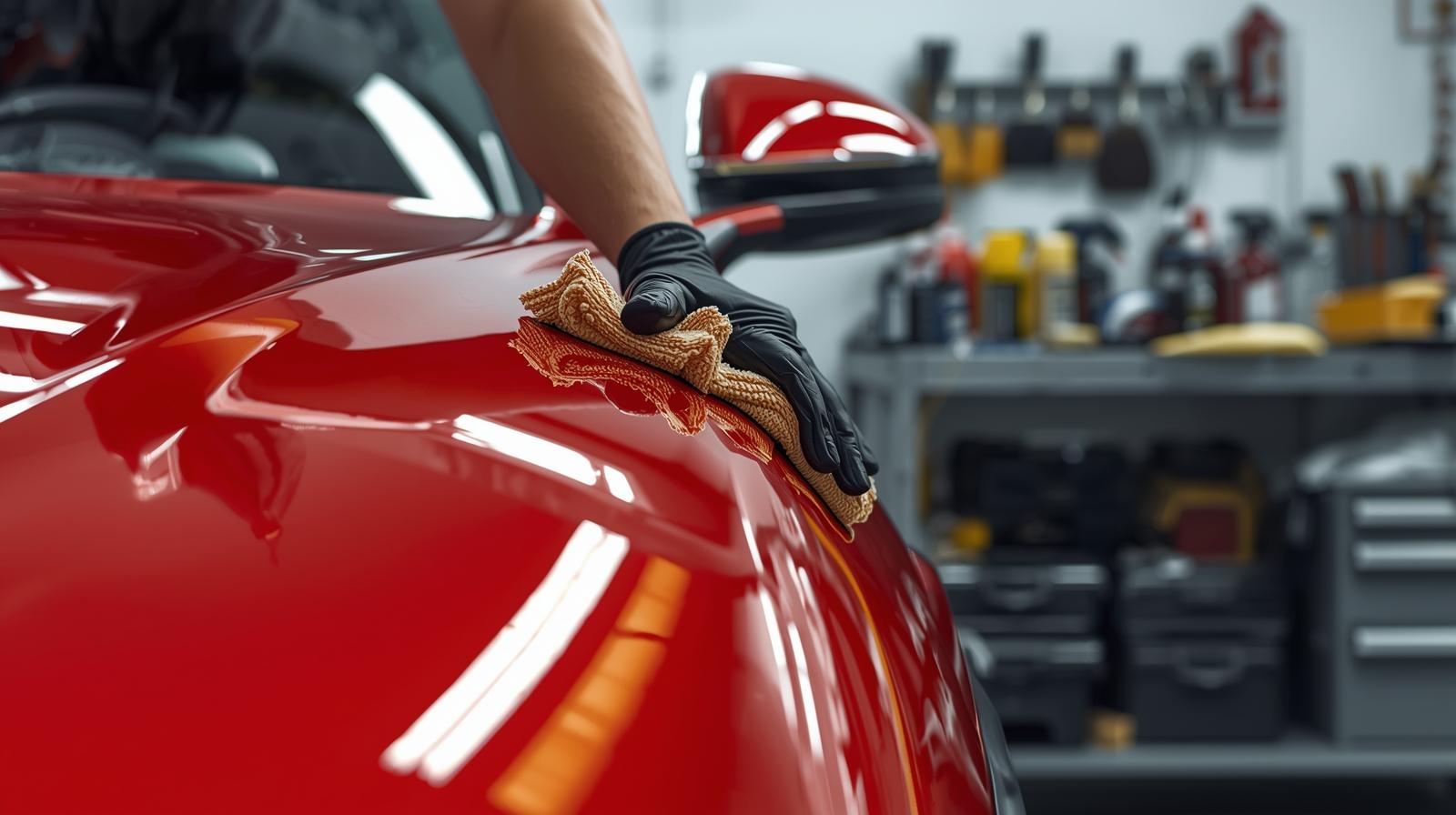A well-maintained, clean car can look like new, regardless of its age. Whether you’re trying to boost the resale value of your vehicle or simply enjoy the satisfaction of driving a spotless car, car detailing is the key to maintaining your car’s aesthetic appeal. In this ultimate guide, we’ll walk you through the best techniques and products to use for car detailing, ensuring your car looks brand new inside and out.
1. What Is Car Detailing?
Car detailing is a comprehensive cleaning and restoration process designed to improve the overall appearance of your vehicle. It goes beyond the typical car wash, involving deep cleaning, polishing, and conditioning of both the exterior and interior. The goal is to restore and maintain your car’s paintwork, wheels, windows, upholstery, and trim, providing a like-new finish.
While a regular car wash is often enough to remove surface dirt, detailing tackles stubborn stains, imperfections, and marks, leaving your vehicle looking flawless.
2. Why Car Detailing Is Important
Car detailing does more than make your vehicle look aesthetically pleasing; it offers several benefits:
- Protects Paintwork: Detailing helps protect the car’s paint from oxidation, fading, and scratches caused by environmental elements like UV rays, road salts, and bird droppings.
- Improves Resale Value: A clean, well-maintained car can have a significantly higher resale value. Detailing helps restore the vehicle’s condition, making it more attractive to potential buyers.
- Prevents Damage: Regular detailing ensures your car’s surfaces are protected, reducing the risk of long-term damage caused by dirt, grime, and contaminants.
- Healthier Interior: Interior detailing removes allergens, bacteria, and dust that accumulate over time, making your car a cleaner and healthier space for you and your passengers.
3. The Essential Steps of Car Detailing
Now that we understand the importance of car detailing, let’s dive into the essential steps to make your vehicle look brand new.
a) Exterior Detailing
1. Washing the Car:
The first step in detailing is a thorough wash. Use a high-quality car shampoo and microfiber wash mitt to remove surface dirt and grime. Begin at the top and work your way down to avoid dragging dirt onto clean areas. Rinse the car thoroughly and dry it with a microfiber towel to prevent water spots.
2. Clay Bar Treatment:
A clay bar is essential for removing embedded contaminants that a regular wash can’t get rid of, such as tar, sap, and industrial fallout. Lightly rub the clay bar over the paintwork after washing, using a lubricant to ensure the clay slides smoothly over the surface.
3. Polishing and Buffing:
Polishing helps restore the shine to your car’s paint and removes light scratches and swirl marks. You can use a dual-action polisher for a more consistent finish, or you can hand-polish if you prefer a more hands-on approach. After polishing, use a microfiber towel to buff off excess product and reveal a gleaming finish.
4. Waxing:
Waxing your car adds a protective layer to the paint, making it more resistant to contaminants, scratches, and fading. Apply a thin layer of car wax using a soft applicator pad, and buff it to a high shine with a microfiber towel. This will help lock in the polished finish and protect the paint for months.
5. Wheel and Tire Care:
Don’t forget your wheels and tires! Clean the wheels with a dedicated wheel cleaner, ensuring you remove brake dust and road grime. Apply tire shine to give your tires a glossy, like-new finish.
b) Interior Detailing
1. Vacuuming:
Start by vacuuming the interior of your car, including the seats, carpets, and floor mats. Use a handheld vacuum or a car vacuum to reach tight spaces and corners where dirt and debris tend to accumulate. Don’t forget to vacuum under the seats and in between the seat cushions.
2. Cleaning Upholstery:
Depending on your car’s upholstery, you’ll need to use the right cleaner. For fabric seats, use an upholstery cleaner and a soft brush to scrub away stains and dirt. If your car has leather seats, use a leather cleaner and conditioner to prevent cracks and fading. For vinyl or plastic seats, use a general interior cleaner.
3. Detailing the Dashboard and Console:
Dust off the dashboard and console using a microfiber cloth. For deeper cleaning, use an interior cleaner designed for plastic and vinyl surfaces. Don’t forget to clean the air vents and controls, as they can trap dust and grime.
4. Glass and Mirrors:
Clean the interior glass with a streak-free glass cleaner. Use a microfiber towel to wipe down the windows, ensuring they’re crystal clear. Don’t forget to clean the rearview mirror and any side mirrors as well.
5. Deodorizing:
A car can sometimes develop unpleasant odors due to food, pets, or other sources. Use an air freshener or odor eliminator to neutralize any unwanted smells. Consider using a fabric refresher for the seats and carpets to keep your car smelling fresh.
c) Engine Bay Detailing
While engine detailing is not as common as exterior and interior detailing, it can be an essential part of maintaining your car, especially if you plan to sell it. Start by using a degreaser to remove any oil or grime build-up in the engine bay. Use a soft brush to scrub away stubborn dirt, and rinse with low-pressure water to avoid damaging any electrical components. Finish by applying a plastic and rubber protectant to restore the engine bay’s appearance.
4. Additional Detailing Tips
- Use the Right Products: Quality detailing products can make all the difference in achieving professional-level results. Always choose products that are specifically designed for car care, and avoid household cleaning products that can damage your vehicle’s surfaces.
- Don’t Forget the Small Details: Small details like cleaning the door jambs, the gas cap area, and the trunk can make a big difference in how your car looks overall. These areas tend to accumulate dirt and grime, so make sure to give them attention during your detailing process.
- Regular Maintenance: To maintain the appearance of your car, regular washing and detailing are essential. Aim to detail your car every few months, depending on how often you use it and the environmental conditions it’s exposed to.
5. How Often Should You Detail Your Car?
The frequency of car detailing depends on several factors, such as how much time you spend on the road, the climate you live in, and your personal preferences. Here’s a general guideline:
- Exterior Detailing: Every 3-6 months, or as needed based on environmental conditions (e.g., exposure to road salt, sun, or rain).
- Interior Detailing: Every 3-6 months, or more often if your car is heavily used.
- Engine Detailing: Every 6-12 months, depending on the amount of engine dirt buildup.
Conclusion
Car detailing is more than just a deep clean—it’s a comprehensive process that protects your vehicle, enhances its appearance, and increases its lifespan. By following the steps in this ultimate guide, you can make your car look brand new and maintain its beauty for years to come. Whether you choose to detail your car yourself or hire a professional, regular car detailing ensures that your vehicle will continue to shine and stand out on the road.
FAQ’s
How long does car detailing take?
Car detailing can take anywhere from 2 to 6 hours, depending on the size of the vehicle and the level of detailing required.
Can I use household cleaners for car detailing?
No, household cleaners can damage your car’s surfaces. Always use products specifically designed for automotive use.
How much does car detailing cost?
The cost of car detailing can range from $100 to $300, depending on the type of detailing and the services included.
Can I detail my car myself?
Yes, many car owners choose to detail their own vehicles. With the right tools and products, you can achieve professional-looking results at home.
How do I maintain my car’s exterior after detailing?
To maintain your car’s exterior, wash it regularly and apply a fresh coat of wax every few months to protect the paint.





